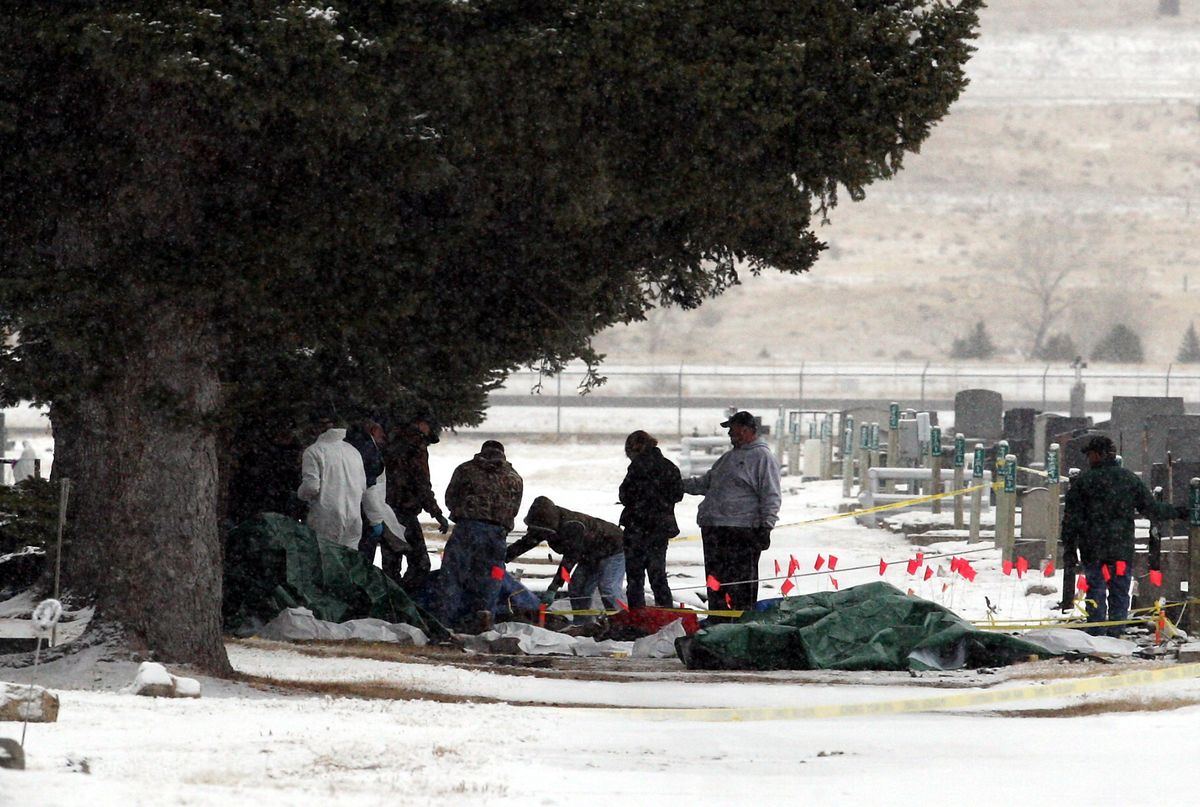Investigators hunt for Montana plane crash’s cause
With no recorders to offer clues, they scour Butte site

WASHINGTON – Speculation over the crash of a single-engine turboprop plane into a cemetery shifted to ice on the wings Monday after it became less likely that overloading was to blame, given that half of the 14 people on board were small children.
While descending Sunday in preparation for landing at the Bert Mooney Airport in Butte, the plane passed through a layer of air at about 1,500 feet that was conducive to icing because the temperatures were below freezing and the air “had 100 percent relative humidity or was saturated,” according to AccuWeather.com, a forecasting service in State College, Pa.
Safety experts said similar icing conditions existed when a Continental Airlines twin-engine turboprop crashed into a home near Buffalo Niagara International Airport last month, killing 50.
“It’s Buffalo all over again, or it could be,” said John Goglia, a former member of the National Transportation Safety Board.
Mark Rosenker, acting NTSB chairman, told reporters in Montana that investigators would look at icing on the wings as a factor.
The plane, designed to carry 10 people, crashed 500 feet short of the Montana airport runway Sunday, nose-diving into a cemetery and killing seven adults and seven children aboard.
Safety experts said finding the cause of the crash is likely to be significantly complicated by the absence of either a cockpit voice recorder or a flight data recorder, which aren’t required for smaller aircraft that don’t fly commercial passengers like airlines and charter services.
Hours after the crash, federal investigators had focused on overloading as a possible cause. But Goglia said the Pilatus PC-12 has a powerful engine for its size and is unlikely to be affected by the additional weight of a few children “unless they had an awful lot of baggage.”
There won’t be any radar data of the plane’s final moments for investigators to examine – the small Butte airport doesn’t have a radar facility.
The last radio communication from the turboprop’s pilot was with the Salt Lake City center when the plane was about 12 miles from Butte, said Doug Church, a spokesman for the National Air Traffic Controllers Association. The pilot told controllers he intended to land at Butte using visual landing procedures rather than relying on instruments.
John Cox, an aviation safety consultant, said the lack of data means investigators will have to go “back to the old, traditional way of investigating aircraft accidents, looking at impact angles, looking at damage done to the aircraft, whether the engine was producing power or not.”
“Then they’ll have to look for anything unusual – bird feathers, a piece missing off the engine – it will be a series of exclusions,” Cox said. “It will be sketchy, and it will not be nearly as definitive as it would be if they had had one of the recorders.”